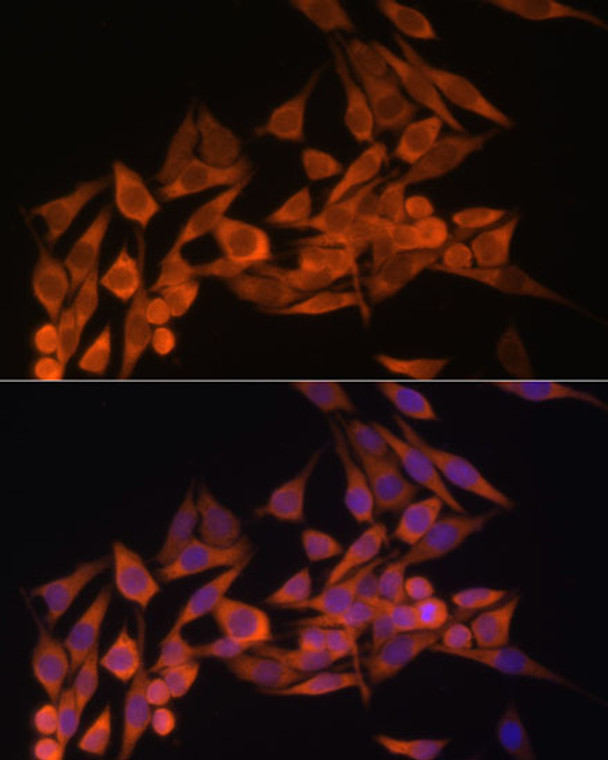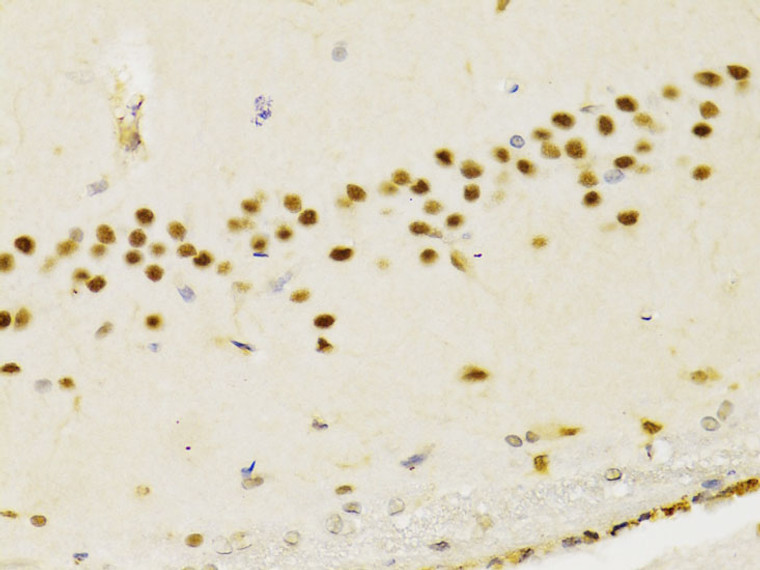| Tissue Specificity | Expressed at a relatively high level in all adult tissues, including heart, brain, placenta, lung, liver, muscle, kidney and pancreas. |
| Post Translational Modifications | Constitutively phosphorylated by CK2 under normal conditions. Phosphorylated in vitro by MAST1, MAST2, MAST3 and STK11. Phosphorylation results in an inhibited activity towards PIP3. Phosphorylation can both inhibit or promote PDZ-binding. Phosphorylation at Tyr-336 by FRK/PTK5 protects this protein from ubiquitin-mediated degradation probably by inhibiting its binding to NEDD4. Phosphorylation by ROCK1 is essential for its stability and activity. Phosphorylation by PLK3 promotes its stability and prevents its degradation by the proteasome. Phosphorylated on Thr-319 and Thr-321 in the C2-type tensin domain following EGF stimulation which changes its binding preference from the p85 regulatory subunit of the PI3K kinase complex to DLC1. Monoubiquitinated.monoubiquitination is increased in presence of retinoic acid. Deubiquitinated by USP7.leading to its nuclear exclusion. Monoubiquitination of one of either Lys-13 and Lys-289 amino acid is sufficient to modulate PTEN compartmentalization. Ubiquitinated by XIAP/BIRC4. Ubiquitinated by the DCX(DCAF13) E3 ubiquitin ligase complex, leading to its degradation. ISGylated. ISGylation promotes PTEN degradation. |
| Function | Acts as a dual-specificity protein phosphatase, dephosphorylating tyrosine-, serine- and threonine-phosphorylated proteins. Also acts as a lipid phosphatase, removing the phosphate in the D3 position of the inositol ring from phosphatidylinositol 3,4,5-trisphosphate, phosphatidylinositol 3,4-diphosphate, phosphatidylinositol 3-phosphate and inositol 1,3,4,5-tetrakisphosphate with order of substrate preference in vitro PtdIns(3,4,5)P3 > PtdIns(3,4)P2 > PtdIns3P > Ins(1,3,4,5)P4. Tumor suppressor, the lipid phosphatase activity is critical for its tumor suppressor function. Antagonizes the PI3K-AKT/PKB signaling pathway by dephosphorylating phosphoinositides and thereby modulating cell cycle progression and cell survival. The unphosphorylated form cooperates with MAGI2 to suppress AKT1 activation. In motile cells, suppresses the formation of lateral pseudopods and thereby promotes cell polarization and directed movement. Dephosphorylates tyrosine-phosphorylated focal adhesion kinase and inhibits cell migration and integrin-mediated cell spreading and focal adhesion formation. Required for growth factor-induced epithelial cell migration.growth factor stimulation induces PTEN phosphorylation which changes its binding preference from the p85 regulatory subunit of the PI3K kinase complex to DLC1 and results in translocation of the PTEN-DLC1 complex to the posterior of migrating cells to promote RHOA activation. Meanwhile, TNS3 switches binding preference from DLC1 to p85 and the TNS3-p85 complex translocates to the leading edge of migrating cells to activate RAC1 activation. Plays a role as a key modulator of the AKT-mTOR signaling pathway controlling the tempo of the process of newborn neurons integration during adult neurogenesis, including correct neuron positioning, dendritic development and synapse formation. Involved in the regulation of synaptic function in excitatory hippocampal synapses. Recruited to the postsynaptic membrane upon NMDA receptor activation, is required for the modulation of synaptic activity during plasticity. Enhancement of lipid phosphatase activity is able to drive depression of AMPA receptor-mediated synaptic responses, activity required for NMDA receptor-dependent long-term depression (LTD). May be a negative regulator of insulin signaling and glucose metabolism in adipose tissue. The nuclear monoubiquitinated form possesses greater apoptotic potential, whereas the cytoplasmic nonubiquitinated form induces less tumor suppressive ability. Isoform alpha: Functional kinase, like isoform 1 it antagonizes the PI3K-AKT/PKB signaling pathway. Plays a role in mitochondrial energetic metabolism by promoting COX activity and ATP production, via collaboration with isoform 1 in increasing protein levels of PINK1. |
| Protein Name | Phosphatidylinositol 3 -4 -5-Trisphosphate 3-Phosphatase And Dual-Specificity Protein Phosphatase Pten Mutated In Multiple Advanced Cancers 1Phosphatase And Tensin Homolog |
| Database Links | Reactome: R-HSA-1660499Reactome: R-HSA-1855204Reactome: R-HSA-199418Reactome: R-HSA-202424Reactome: R-HSA-5628897Reactome: R-HSA-5674404Reactome: R-HSA-5689880Reactome: R-HSA-5689896Reactome: R-HSA-8943723Reactome: R-HSA-8948747Reactome: R-HSA-8948751Reactome: R-HSA-8986944 |
| Cellular Localisation | CytoplasmNucleusPml BodyCell ProjectionDendritic SpinePostsynaptic DensityMonoubiquitinated Form Is NuclearNonubiquitinated Form Is CytoplasmicColocalized With Pml And Usp7 In Pml Nuclear BodiesXiap/Birc4 Promotes Its Nuclear LocalizationAssociares With The Postsynaptic Density In Response To Nmdar ActivationIsoform Alpha: SecretedMay Be Secreted Via A Classical Signal Peptide And Reenter Into Cells With The Help Of A Poly-Arg Motif |
| Alternative Antibody Names | Anti-Phosphatidylinositol 3 -4 -5-Trisphosphate 3-Phosphatase And Dual-Specificity Protein Phosphatase Pten antibodyAnti-Mutated In Multiple Advanced Cancers 1 antibodyAnti-Phosphatase And Tensin Homolog antibodyAnti-PTEN antibodyAnti-MMAC1 antibodyAnti-TEP1 antibody |










![Anti-PTEN antibody [6H2.1] (STJ16101367) Anti-PTEN antibody [6H2.1] (STJ16101367)](https://cdn11.bigcommerce.com/s-zso2xnchw9/images/stencil/300x300/products/151876/346961/STJ16101367_1__87004.1681999192.jpg?c=1)

